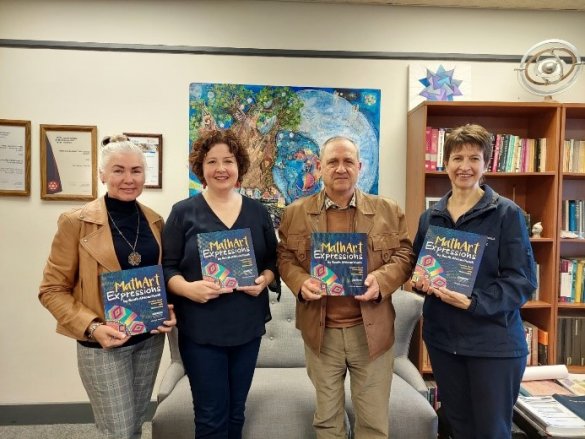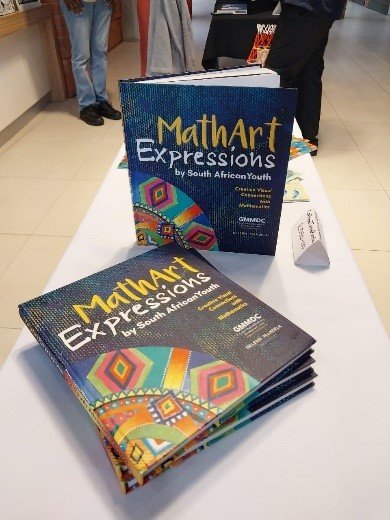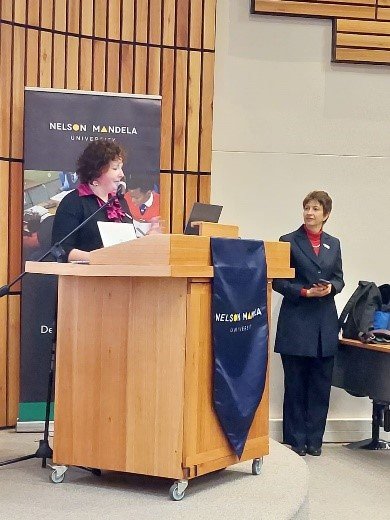Learners combine maths and art in coffee table book
28 July 2022
A selection of artworks submitted by learners to the annual MathArt competition is now available in a unique coffee table book, MathArt Expressions by South African Youth.
The book, which was launched last month, emanates from an annual MathArt competition run by Nelson Mandela University’s Govan Mbeki Mathematics Development Centre (GMMDC).
The competition is aimed at encouraging learners to bridge the gap between maths and art – and gain the skills they will need to navigate careers in the highly innovative and technologically creative Fourth Industrial Revolution.
“In the book, we explore what we’ve done with the maths and art project and how we are working to promote the Science, Technology, Engineering, the Arts and Mathematics (STEAM) approach in teaching mathematics at school, in line with international trends,” said GMMDC director Prof Werner Olivier.
“The math art project is a practical way to promote trans disciplinarity in schools.”
True to form, the book uses a metaphor from the world of science and maths – the natural processes of a baobab tree - to explain how the art competition evolved.
Using more visuals than words, the “roots” chapter tells the story of GMMDC and how its emphasis on STEAM education inspired the competition. The “trunk” chapter expands on the competition and shares how it has grown from provincial to national, including more and more learners and educators, and how it has also strengthened maths education. The “branches” chapter describes the incredible artworks received from the learners, and the different themes they have explored, while the “fruits” chapter depicts the unexpected outcomes, for instance, how the learners have shared the emotions they have experienced – both their frustration and excitement – as they have grappled with the subject of maths, or the searching questions they have asked about the subjects they explore. The “reach” chapter covers the competition’s footprint, from an educational and international perspective.
“The MathArt project has gained a lot of support over the years from schools across the country,” said GMMDC project coordinator Carine Steyn. “And every year, we are blown away by the calibre of the entries.”
“One of our aims has also been to make the project as accessible as possible to all learners, especially those in under-resourced schools. All you need to enter the competition is a piece of a paper and a pencil.”
Learners submit a photograph of their artworks online in categories according to the grades. After the first two rounds of adjudication, the selected top entrants courier their artworks to GMMDC for final adjudication by a diverse panel of judges, including mathematicians, artists, teachers, lecturers, STEAM educators, architects and designers. Where necessary, GMMDC assists learners to submit their artworks.
“Through the competition, we can encourage learners and teachers to see maths differently. They are encouraged to see maths as not boring, but relevant and fun,” said Steyn.
The competition has grown on many levels since 2018. It moved from being a provincial competition to a national competition in 2019. Grade 7 learners were included since 2020 which also opened the competition to the primary schools.



